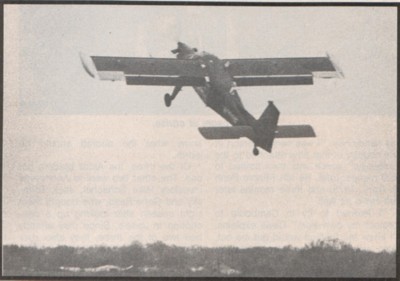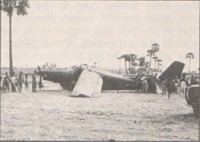| "We rolled about 100 feet and jumped off the ground like a frog off a hot rock" |
| Helio |

by Gene Smith
Reprinted from Air Progress MagazineThe last times I saw 91F, it was bedecked in a gleaming new orange and white finish. Leatherette and carpet covered the interior. It looked no more military than a Cessna 150; instead, it was just another civilian airplane looking for work. A rare and singularly capable one.
To me, it still looked ugly, but the little known military version of the Helio Stallion, and the even uglier Fairchild (nee Pilatus) AU-23 Porter, are somewhere toward the front of that particular parade. Both have a wing like a discarded door; both look
like the result of a mad moment between an anteater and a pelican.
Turboprops are also noisy. They snarl and whine and squeal and growl in a quite astonishing range of discordancy. And they stink. They reek of kerosene instead of the clean, tangy odor of honest high-test gasoline.

But beauty is in the eye of the beholder,and to Paul Davis, the Stallion is lovely. Davis, of course, doesn't know any better. He learned the me-
chanics trade on jets and turboprops
And he learned to fly in this airplane. In combat. Working on the Mekong River at night with a 20-mike-mike minigun thrusting its deadly multi-barrelled snout out the side of the airplane- a highly unofficial way for a civilian tech rep to go to war. The fact that this ship and its two sister ships survived at all are largely due to him and a handful of dedicated Khmer airmen
The 32 year old Davis was a contract technical representative for Helio Aircraft in Southeast Asia from 1970 until June, 1972, while the airplanes were working in Vietnam and Laos. In October 1973, he was called back to perform the same function in Cambodia, since 14 of the 16 AU-24s originally purchased by the USAF had been reassigned- minus spares or support equipment to the Lon Nol government.
"I was one of the last people out," says Davis, running a hand through
Page 2